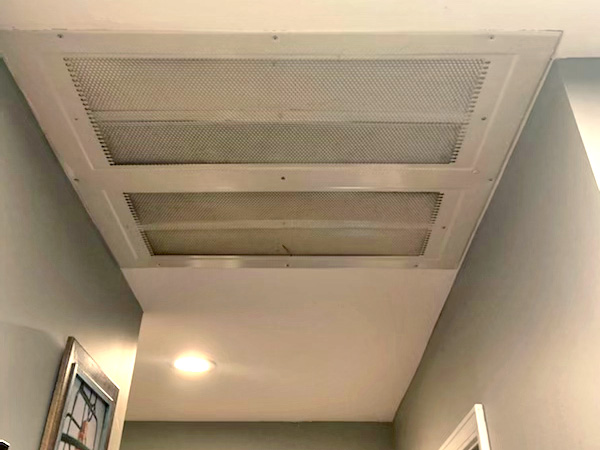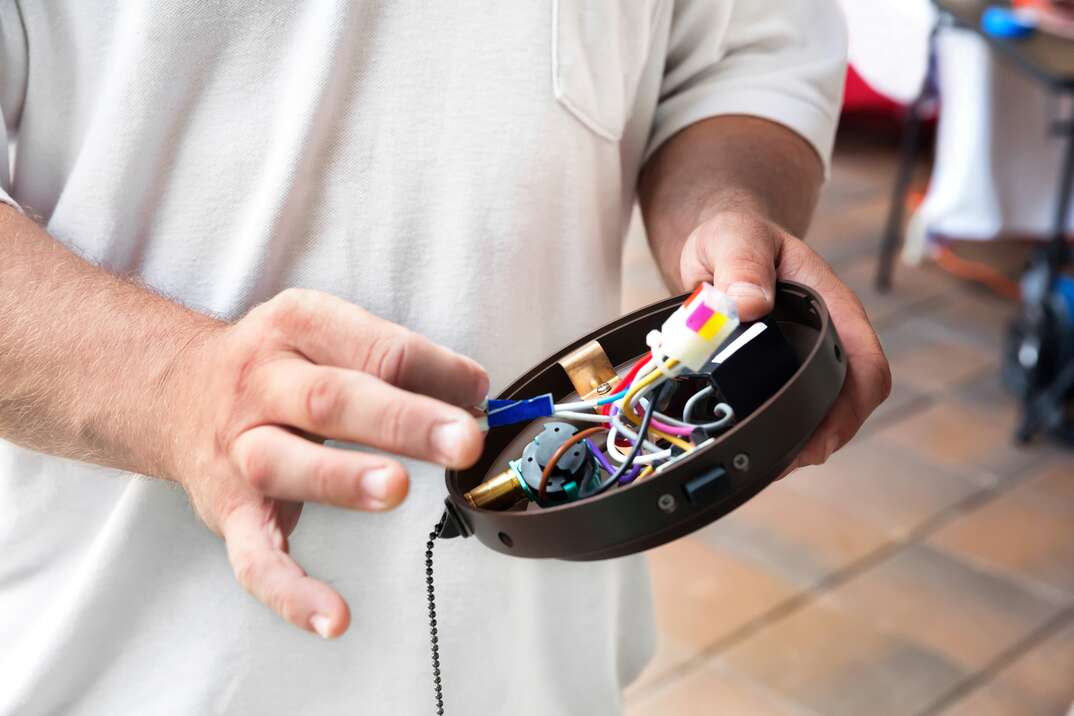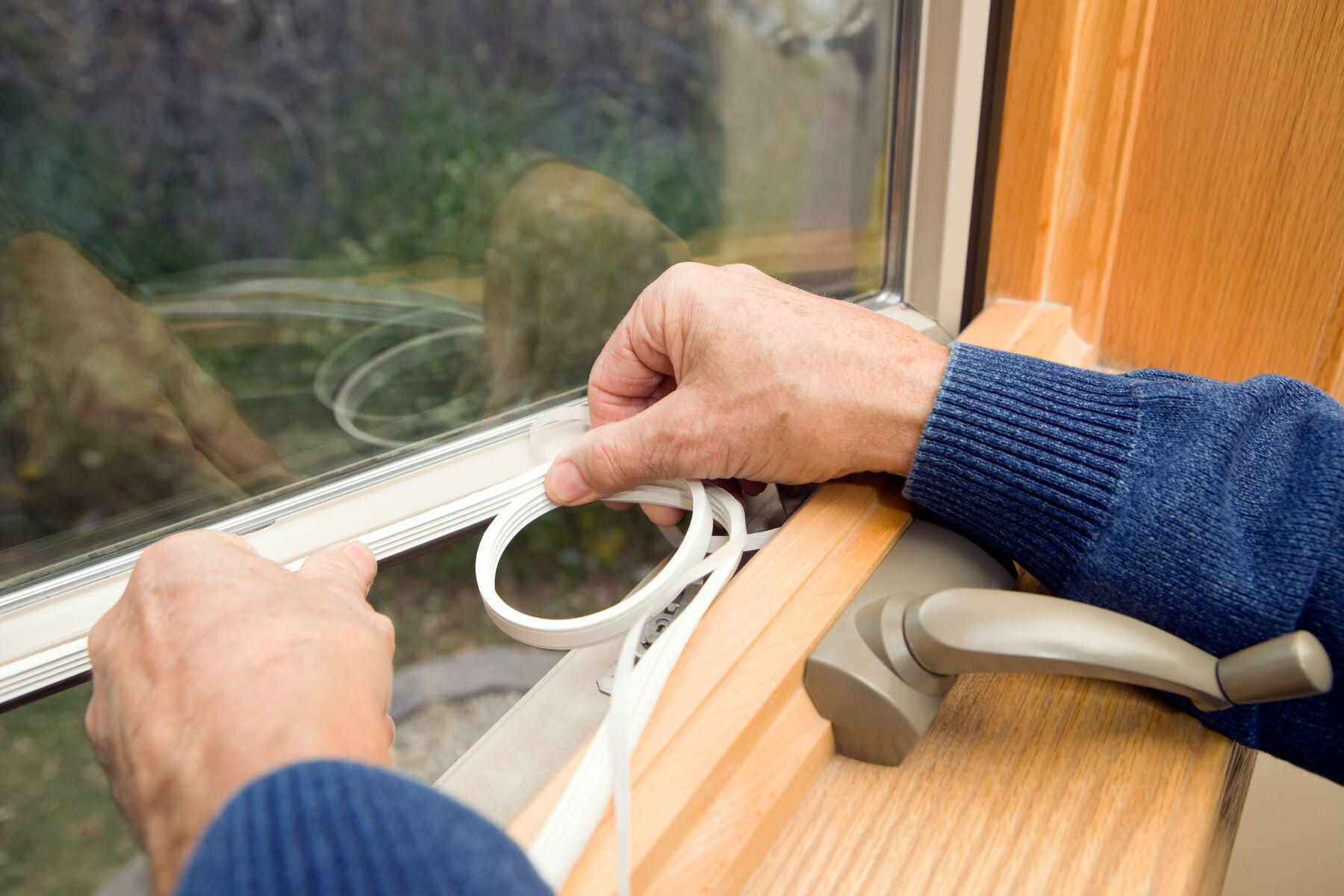Whole-House Fan Installation Guide: 5 Steps to a Cooler Home

Installing a Whole-House Fan at a Glance
- Tools & Materials: Sturdy wire, drywall saw, electric cable, floor insulation, screwdriver
- Step 1: Choose location
- Step 2: Cut air intake hole
- Step 3: Attach mounting brackets
- Step 4: Wire fan
- Step 5: Install fan
A whole-house fan is an eco-friendly, cost-effective way to cool and ventilate your property by drawing cool air in from outside. Some homeowners even use them as a cheaper alternative to an air conditioning system. Alternatively, you can use your whole-house fan along with an air conditioning system — as long as you don't run both at the same time.
This May Also Interest You: How to Wire a Ceiling Fan
Anyone with basic DIY knowledge can install a whole-house fan. Just follow our step-by-step guide.
How Do Whole-House Fans Work?
Whole-house fans cool your home down by pushing warm air out of the roof vents and drawing cool fresh air in from outside. A whole-house fan differs from an attic fan because it can ventilate the entire house, while an attic fan only cools the attic space. Installing a whole-house fan is significantly more affordable than an air conditioning system, but the two systems can coexist. However, you shouldn't use a whole-house fan and your air conditioning simultaneously.
Installing a small whole-house fan will improve the ventilation in your home and provide moderate cooling, but you probably won't notice much of a breeze. A larger fan will create noticeable cool airflow around your entire home.
Can You Install a Whole-House Fan Yourself?
If you’ve got basic DIY skills, you can do this project yourself and even save some money on installation costs. Generally, you won't need to make any structural changes to install the fan, making it a reasonably straightforward project.
However, wiring the fan into your home's electrical system is a bit more complicated, and it could be dangerous if you don't know what you're doing. Some areas do not permit homeowners to carry out this kind of electrical installation themselves. Check first that it's legal for you to wire a whole-house fan where you live, and call a professional if you're uncertain.
How to Install a Whole-House Fan: A Step-by-Step Guide
Before you start installing your whole-house fan, you'll need to take a few basic safety measures. As the fan sits in the ceiling below the attic, you'll need to create a hole in your attic floor. Make sure that you have adequate lighting and place planks across the ceiling joists to allow you to move around safely. You'll also need protective eyewear and a mask because cutting a hole in the floor will be dusty work.
You'll also need the following materials and equipment:
- Sturdy wire, such as a straightened coat hanger
- Drywall saw
- Electrical cable
- Floor insulation
- Screwdriver
Step 1: Choose the Location
It's generally advised to install your whole-house fan above a central hallway to achieve the best possible airflow. Start by selecting a suitable spot in the hallway below the attic that's clear of any light fixtures and insert a piece of wire through the ceiling into the attic space above. A straightened coat hanger is ideal for this purpose because it's tough enough to push through the ceiling materials.
Next, climb up into the attic and locate the wire. Check the area around it for any cables, pipes or other obstructions that could get in the way, and make sure that there's enough room to install the fan between the joist and the ceiling.
Mark the location of the joist closest to the wire so that you can see it when you look up at the ceiling from the hallway below. The simplest way to do this is to make a hole on either side using another piece of wire or a thin blade.
Step 2: Cut the Air Intake Hole
You can now use the holes in the ceiling as a guide to help you position the air intake hole. Find the cardboard template included with your whole-house fan and tape it to the ceiling. Saw around it, watching out for any falling pieces of ceiling material.
At this point, the circular section of the ceiling may simply come away. If it doesn't, cut it away on either side of the ceiling joist. Leave the remaining piece attached to the joist — unless the manufacturer directions tell you to remove it — as it can help support the assembly.
Step 3: Attach the Mounting Brackets
Most whole-house fans come with mounting brackets to attach them to the joist. Attach them to the fan casing using bolts as described in your instruction manual.
Step 4: Wire the Fan
Before you attempt to connect the fan to your home's electrical system, check the electrical codes in your area. Some jurisdictions require a licensed professional to connect electrical fixtures to a circuit. You should also hire an electrician to complete this stage if you're not confident in your ability to wire the fan correctly.
If you're permitted to wire the fan yourself and feel comfortable doing so, either connect the fan to the control panel or an existing circuit using a length of electrical wire. Switch the power off before working with your electrical system. Make sure that your chosen circuit won't be overloaded by adding an extra fixture.
Step 5: Install the Fan
Once you've finished wiring the fan, use bolts to secure the mounting brackets to the ceiling joist. At this stage, you should attach the cardboard baffles that came with your whole-house fan according to the manufacturer's instructions. Place floor insulation around the baffles, taking care to ensure that it doesn't touch the fan itself. Screw the louver panel to the joist to cover the hole in the ceiling.
More Related Articles:
- What’s the Span of Your Fan? Here’s How to Measure for a Ceiling Fan
- Exhaust Options: A DIY Bathroom Fan Installation Overview
- How Much Does It Cost to Install an Exhaust Fan in the Bathroom?
- What Size Air Conditioner Do I Need?
- Got Gable Vents? Here’s What You Need to Know About Your Attic’s Airflow
How to Use a Whole-House Fan
You should always open a few windows before you switch your whole-house fan on. Otherwise, the fan won't be able to draw in cool air from outside and could pull exhaust fumes or chimney soot into your home. If you're not sure how many windows to open, consult a local technician with experience installing and operating whole-house fans.
Open the windows in the parts of the house that you want to cool down while leaving them shut in areas that you don't intend to use. You'll probably need to switch the fan on manually. Once your house feels cool enough, close the windows and turn the fan off to keep your home at your desired temperature for as long as possible without wasting energy.
It's best to use your whole-house fan at night and cooler times of the day. If the air outside is hot, you'll simply end up drawing more warm air inside your home. Operating your whole-house fan at night and then closing the windows in the day can help you maintain a cool temperature, especially if you use it in relay with your air conditioning.
During the winter, a whole-house fan can let cold air into your living space and make your home less energy efficient. Seal and cover your fan during cold weather to keep the chill out.
Can You Install a Whole-House Fan Without an Attic?
If you don't have an attic, you may still be able to install a whole-house fan. Depending on your home's structure, you could consider installing the fan in an external wall or the roof. However, this is a more difficult project than installation between the ceiling and attic because you need to remove roof shingles or make structural changes to a wall. It's best to call a professional to install a whole-house fan without an attic.
Whole-House Fans Vs. Ceiling Fans
Many people confuse whole-house fans with ceiling fans, but the two fixtures function very differently. A whole-house fan can cool your entire home by pulling cool air from outside and letting hot air escape through the roof. On the other hand, ceiling fans only affect the room in which you install them. They don't make a difference to the room temperature because they can't ventilate your home or pull in cold air. Instead, they offer evaporative cooling.
Another key difference between whole-house fans and ceiling fans is that a whole-house fan sits concealed between the ceiling and attic space. Ceiling fans are installed in the ceiling in full view. If you don't like the aesthetic of a large fan in the middle of your ceiling, a whole-house fan could be the better option.


